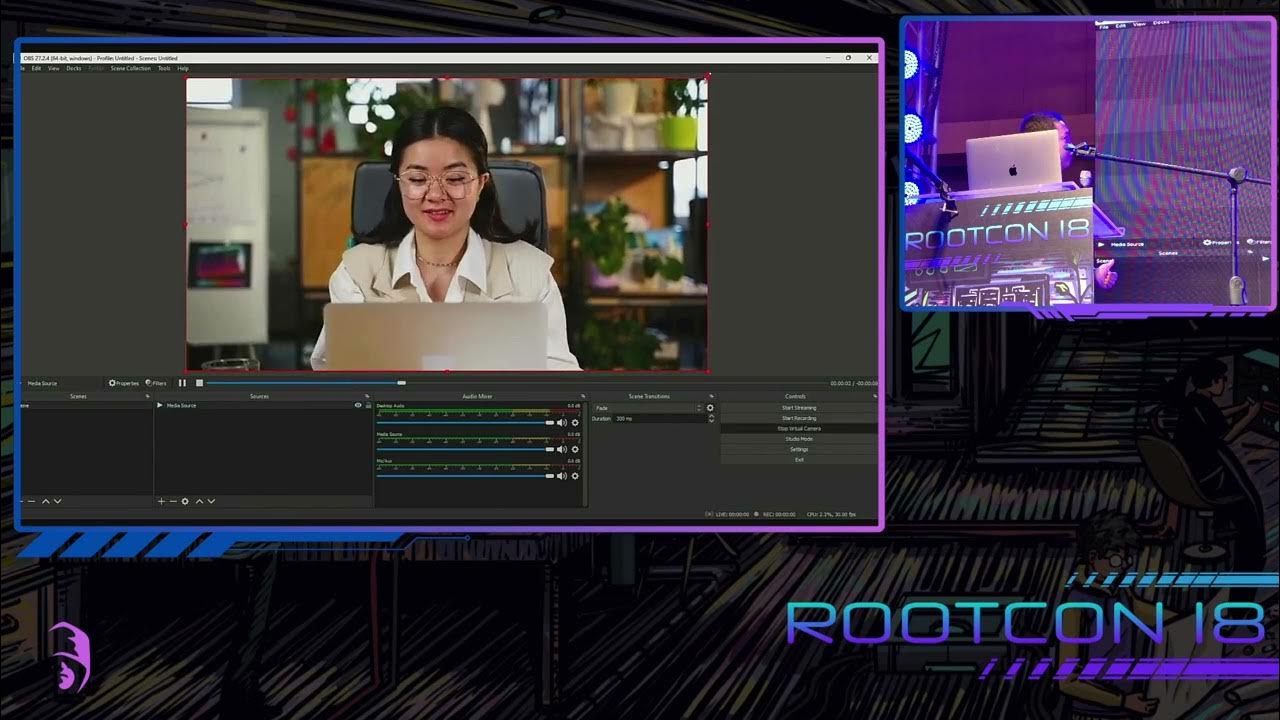CompTIA Security+ SY0-701 Course - 4.3 Activities Associated With Vulnerability Management. - PART A
Summary
TLDRThis presentation explores various methods for identifying and addressing IT security vulnerabilities. It covers automated vulnerability scans using tools like Nessus, application security through static and dynamic analysis, package monitoring for dependencies, and threat feeds for staying informed about emerging threats. The script also discusses proactive measures like penetration testing and responsible disclosure programs, including bug bounty incentives. System audits ensure compliance and security strategy effectiveness. The presentation concludes that a multifaceted approach to vulnerability management is essential for early identification and mitigation of risks.
Takeaways
- 🔍 Vulnerability scans are automated tools that identify security weaknesses in networks, systems, and applications, such as unpatched software or open ports.
- 🛠 Tools like Nessus and OpenVAS are commonly used for regular network vulnerability scanning by organizations.
- 📝 Application security involves static and dynamic analysis to find vulnerabilities in code, with static analysis examining code at rest and dynamic analysis testing applications during runtime.
- 🔄 Package monitoring tracks dependencies for known vulnerabilities, which is crucial in the software development lifecycle for ensuring application security.
- 🌐 Threat feeds provide up-to-date information on potential security threats, including open-source intelligence and insights from dark web monitoring.
- 🛡 Penetration testing simulates cyber attacks to evaluate system security and uncover exploitable vulnerabilities, often involving ethical hackers.
- 💡 Responsible disclosure programs encourage the reporting of vulnerabilities to the organization for remediation.
- 🏆 Bug bounty programs incentivize external individuals to report vulnerabilities with rewards, like those run by companies such as Google and Microsoft.
- 📋 System and process audits are formal examinations for compliance with policies and standards, identifying security gaps that automated scans might miss.
- 🔑 Regular audits are a critical component of a comprehensive security strategy, ensuring that policies and configurations are secure.
- 🛑 Effective vulnerability management is a multifaceted approach that includes various methods and tools, helping organizations identify and mitigate potential risks early on.
Q & A
What are vulnerability scans and how do they help in identifying security weaknesses?
-Vulnerability scans are automated tools that identify security weaknesses in networks, systems, and applications. They detect known vulnerabilities such as unpatched software or open ports, using tools like Nessus or OpenVAS to regularly scan networks.
How do static and dynamic analysis contribute to application security?
-Static analysis examines code when it is not running to find vulnerabilities, while dynamic analysis tests applications during runtime. These methods are crucial in the software development life cycle to ensure the security of applications.
What is package monitoring and why is it essential for software development?
-Package monitoring tracks dependencies for known vulnerabilities. It is essential in the software development life cycle to identify and address security issues in the packages used by applications before they can be exploited.
What role do threat feeds play in an organization's security strategy?
-Threat feeds provide up-to-date information about potential security threats, including open-source intelligence, proprietary data, and insights from the dark web. They help organizations stay informed about emerging threats and adapt their defenses accordingly.
How does penetration testing simulate cyber attacks to evaluate system security?
-Penetration testing involves simulating cyber attacks to find exploitable vulnerabilities in a system. It is a proactive approach where ethical hackers are hired to test network defenses and reveal weaknesses before actual attackers can exploit them.
What is the purpose of responsible disclosure programs in vulnerability management?
-Responsible disclosure programs encourage the reporting of vulnerabilities to the organization for remediation. They help organizations identify and fix security gaps before they can be exploited by malicious actors.
How do bug bounty programs incentivize the reporting of vulnerabilities?
-Bug bounty programs offer rewards to external individuals who report vulnerabilities in an organization's systems. Companies like Google and Microsoft run successful bug bounty programs, offering significant rewards for reported vulnerabilities.
What is the significance of system and process audits in ensuring compliance with security policies and standards?
-System and process audits are formal examinations that ensure compliance with policies and standards. They can identify security gaps in processes or configurations that automated scans might miss, making them a critical component of a comprehensive security strategy.
Can you provide an example of how these vulnerability management methods work together in a real-world scenario?
-A financial institution might use vulnerability scans to identify potential weaknesses, conduct penetration testing to assess their impact, and utilize threat feeds to stay updated on financial-specific cyber threats, creating a robust vulnerability management program.
What is the conclusion of the presentation regarding effective vulnerability management?
-Effective vulnerability management is a multifaceted approach that encompasses various methods and tools. Regularly employing these practices helps organizations identify vulnerabilities early and take proactive steps to mitigate potential risks.
How do organizations benefit from a comprehensive vulnerability management program?
-A comprehensive vulnerability management program helps organizations stay ahead of potential security threats by identifying vulnerabilities early, understanding their impact through testing, and staying informed about emerging threats, thus reducing the risk of successful cyber attacks.
Outlines

Dieser Bereich ist nur für Premium-Benutzer verfügbar. Bitte führen Sie ein Upgrade durch, um auf diesen Abschnitt zuzugreifen.
Upgrade durchführenMindmap

Dieser Bereich ist nur für Premium-Benutzer verfügbar. Bitte führen Sie ein Upgrade durch, um auf diesen Abschnitt zuzugreifen.
Upgrade durchführenKeywords

Dieser Bereich ist nur für Premium-Benutzer verfügbar. Bitte führen Sie ein Upgrade durch, um auf diesen Abschnitt zuzugreifen.
Upgrade durchführenHighlights

Dieser Bereich ist nur für Premium-Benutzer verfügbar. Bitte führen Sie ein Upgrade durch, um auf diesen Abschnitt zuzugreifen.
Upgrade durchführenTranscripts

Dieser Bereich ist nur für Premium-Benutzer verfügbar. Bitte führen Sie ein Upgrade durch, um auf diesen Abschnitt zuzugreifen.
Upgrade durchführenWeitere ähnliche Videos ansehen

Keamanan Data SI Pertemuan 4 RZK

Wiz Cloud Security Platform - Full Video Demo

Valise Audit Interne

CYBER SECURITY BASICS - VIDEO 1 | ZERO TO HERO | TAMIL #learncybersecurity #youtubetech #tamiltech

Fix Vulnerable & Outdated Components: OWASP Top 10 A06 Explained with Examples

Seeing is Not Believing: Bypassing Facial Liveness Detection by Fooling the Sensor
5.0 / 5 (0 votes)
